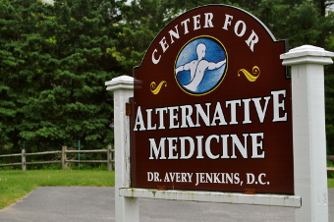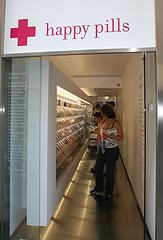A number of years ago, I wrote down the core principles by which my practice operates. Such documents need to be reviewed from time to time, and it seems that now, during this time of rapid societal change, would be a good time. And inasmuch as my practice is an outer reflection of my inner self, the core values of my practice and myself are one and the same.
1. My patients’ health is paramount
In one sense, this is obvious. Healing is why people come to me. But a practice is a business, after all, and business concerns need to be addressed -- margins, overhead, profit and loss. Over the years, I have seen many medical and chiropractic practices, and more than a few have put the concerns of the business over the concerns of the patient. Scheduling and billing practices that suit the needs of the providers, not the patients, and treating patients as if they were simply grist for the giant medical mill are two signs that the patients’ best interests are not being looked after.
I’m proud to say that after nearly 25 years in practice, I have yet to turn a patient away because they couldn’t afford me. I have kept my fee schedule reasonable -- it has hardly changed over that time -- and I have always been willing to work out a payment plan. If that is still not feasible, I’ll take a patient pro bono, and accept their goodwill as payment.
After the thousands of people I have treated, I still feel honored each time I walk into Exam Room A and meet a new patient. It is an honor being chosen by someone to help them find health or become free of pain. And I try to make sure that, throughout their visits and their interactions with me and my staff, they feel honored.
This kind of outlook is also a basic principle of my particular brand of health care. We are, all of us, dependent on one another and our environment for our health. From the bacterial surrounding us and within us, to the friends and family beside us, our health is determined by the company we keep. So in keeping you healthy, I keep myself and my practice healthy.
2. All patients -- all people -- are equal.
It almost feels ridiculous to even mention it, but in these times, such words need to be said, out loud and up front. I do not tolerate intolerance in myself or in the people who walk through my door. Years ago, I redesigned many of my practice processes -- and even recoded some of my software -- to make my practice more open to transgender people, because so many doctors’ offices at the time were hostile to transgender men and women. Some still are. It goes back to Principle #1: All of those people around me are honored.
I will treat anyone regardless of race, gender identity, sexual orientation, religion, citizenship status or political beliefs. And at the same time, while you are in my office, as patient or guest, you will abide by this rule of respect as well. I hope for the day when I can drop this value from my list as no longer a concern, but in the past few months, I have had to remind some people that, whatever beliefs they may hold personally, bigoted speech and action will absolutely not be tolerated in my office.
3. I exist to offer an alternative.
More often than I would like, I have described myself as “The last doctor on your list that you should have come to first.” And that is in part of my own making. What I offer is unique, unlike most other doctors, even many chiropractic doctors. I am informed by science but not bound by it, guided by intuition but not blinded by it, and aware of my limitations but not afraid to push beyond them.
Unique isn’t what everybody wants in their healthcare, and I can understand that. But I stand at the border of where the tried and true has failed. Yes, I’m as capable as the next chiropractor at eliminating neck pain or taking care of a blown spinal disc. I can also guide my patients along paths to health which have been ignored or forgotten, to achieve results where other therapies have not.
It has been frequent enough that patients have come to me after years of illness and pain, and have left my care immeasurably better, that I know that this is not a fluke. And a great deal of my success comes from my adherence to Principle #4:
4. One size does not fit all.
From the day I opened my practice, I have been dedicated to the principle that customized treatment regimens work best. Unfortunately, this principle flies directly in the face of health care’s current guiding light: Evidence-based medicine.
Evidence-based medicine is built upon the idea that all patients with a certain diagnosis respond equally well to certain interventions. So, if a patient comes to my office with, say, low back pain, I’m supposed to recommend certain conservative procedures for a certain period of time, gradually replacing “passive” methods -- heat, electrical stimulation, spinal adjustments -- with “active” methods -- exercise.
Let’s just say I’m not very good at that. If a patient comes to my office with low back pain, I may end up talking to them about their marriage or job, or examining their feet or their diet. Why? Because I know from decades of clinical experience that these factors play a huge role in this kind of pain. The resulting care I provide will likely look nothing like what evidence-based-medicine declares to be the “right” treatment.
But it is exactly the right treatment for that patient.
5. Find it, fix it, and get out of the way.
My overarching job as your doctor is to make myself relatively useless in your life, as soon as possible. I aim to get my patients to the point where they are either free of the condition that brought them to my office or able to manage it largely on their own.
While I am working with them, I give my patients many tools and resources they can use to improve their condition when they aren’t visiting me, and I am not of the belief that all of my patients require ongoing care. Certainly the majority of people I see will need some measure of long-term oversight, but that is a decision that we make together. And there are some patients who leave care with a cheerful “See ya, Doc!” and won’t need to be back in my office for years.
Looking at the long term.
That said, I’ve now been in practice long enough to have as my patients the grandchildren of people who became my patients years ago. I treated their children as youths and young adults, and knowing how my care benefited them, are now bringing their own children in to see me. I have patients that I began treating as toddlers no taller than my knee, and who now tower over me, and come in for a visit when they are home on break for college.
I think these principles have served me well through the years, but more importantly, they have served my patients well. I am grateful for each and every person who has walked through my door, and remain honored and humbled by your trust in me. And that’s Principle #6: It really is all about you.

















 Which makes the denial of coverage for this disorder little short of heinous, particularly because the solutions we have at hand are relatively successful and not particularly experimental. Unfortunately, even for those people with health insurance, denial of coverage for surgical transition is the norm, via a “Transsexual Exclusion Clause” which excludes all medical procedures related to a person’s transgender status.
Which makes the denial of coverage for this disorder little short of heinous, particularly because the solutions we have at hand are relatively successful and not particularly experimental. Unfortunately, even for those people with health insurance, denial of coverage for surgical transition is the norm, via a “Transsexual Exclusion Clause” which excludes all medical procedures related to a person’s transgender status.





 Every patient who walks into my exam room receives -- at no extra charge! -- a critical evaluation of their exercise regimen, or lack thereof. At this point, regular exercise has been proven so critical in the prevention and treatment of so many disorders, from depression to cancer to heart disease to the cold and flu, that in my not-very-humble opinion, any primary care doctor who does not investigate, evaluate and manipulate their patient's exercise program is committing malpractice. Yes, it's that important. It's like not taking a patient's blood pressure or pulse. A person's participation in exercise is one of the vital signs of wellness.
Frequently, my job is to find exercises that will work within the boundaries set by a patient's existing disorder while at the same time optimizing it to reduce or eliminate the effects of that same disorder.
Every patient who walks into my exam room receives -- at no extra charge! -- a critical evaluation of their exercise regimen, or lack thereof. At this point, regular exercise has been proven so critical in the prevention and treatment of so many disorders, from depression to cancer to heart disease to the cold and flu, that in my not-very-humble opinion, any primary care doctor who does not investigate, evaluate and manipulate their patient's exercise program is committing malpractice. Yes, it's that important. It's like not taking a patient's blood pressure or pulse. A person's participation in exercise is one of the vital signs of wellness.
Frequently, my job is to find exercises that will work within the boundaries set by a patient's existing disorder while at the same time optimizing it to reduce or eliminate the effects of that same disorder.

 Those of you who have followed this blog for some time, or who receive my
Those of you who have followed this blog for some time, or who receive my 